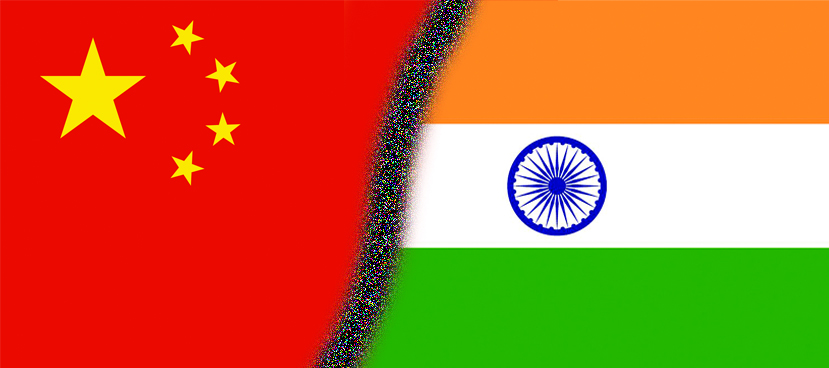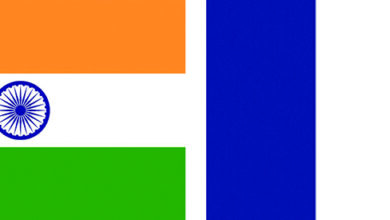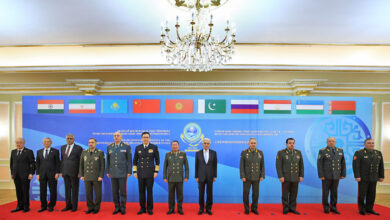Chinese shadow looms over India
By Sarosh Bana
 Mumbai. The latest of a series of unprovoked transgressions of the LAC [Line of Actual Control] by Chinese troops on 9 December sparked a furore in Parliament, forcing the government to get Defence Minister Rajnath Singh to make a statement in both the Houses on this crucial issue.
Mumbai. The latest of a series of unprovoked transgressions of the LAC [Line of Actual Control] by Chinese troops on 9 December sparked a furore in Parliament, forcing the government to get Defence Minister Rajnath Singh to make a statement in both the Houses on this crucial issue.
In his brief statement, the Minister said: “On 9 December 2022, PLA troops tried to transgress the LAC in Yangtse area of Tawang Sector [in Arunachal Pradesh] and unilaterally change the status quo. The Chinese attempt was contested by our troops in a firm and resolute manner. The ensuing face-off led to a physical scuffle in which the Indian Army bravely prevented the PLA [People’s Liberation Army] from transgressing into our territory and compelled them to return to their posts. The scuffle led to injuries to a few personnel on both sides. I wish to share with this House that there are no fatalities or serious casualties on our side.”
Pointing out that the timely intervention of Indian military commanders caused the PLA soldiers to return to their locations, Rajnath Singh maintained, without elaborating: “As a follow-up of the incident, local Commander in the area held a Flag Meeting with his counterpart on 11 December 2022 to discuss the issue in accordance with established mechanisms. The Chinese side was asked to refrain from such actions and maintain peace and tranquillity along the border. The issue has also been taken up with the Chinese side through diplomatic channels.”
Refusing to take any questions on his statement, the Minister took his seat after mentioning: “I would like to assure this House that our forces are committed to protecting our territorial integrity and will continue to thwart any attempt made on it. I am confident that this entire House will stand united in supporting our soldiers in their brave effort.”
As fleeting as the clash was, soldiers were wounded on both the sides, with more PLA troops estimated to have been injured than the 20 on the Indian side, at least six of whom needed to be airlifted to Guwahati, in the adjoining state of Assam, for treatment. It was also the first physical combat between the two sides since the deadly clash in the Galwan Valley in eastern Ladakh in June 2020 that took a toll of 20 Indian jawans.
It is possible that the PLA’s was a tactical retreat and this scuffle was part of a wider design that may unfold in the days to come. The timing for the intrusion too proved awkward for India, which, after assuming the year-long Presidentship of G-20 on 1 December, was hosting G-20 Development Working Group (DWG) meetings in Mumbai from 13 to 16 December. The 19 G20 member-states include China and delegations from these countries are attending 215 meetings being hosted by the government across 56 cities, including those in all the seven northeastern states, including Arunachal.
A Chinese delegate, Hanwen Tang, was quoted as remarking that it had been for him “a great experience to enjoy Indian hospitality”, and that G20 provided “a great platform for India and China to discuss the important issues that concern the whole world”.
China had similarly embarrassed India internationally when its troops had waded into the Demchok and Chumar areas of the border Union Territory of Ladakh exactly when Chinese President Xi Jinping was meeting Prime Minister Narendra Modi at Ahmedabad in 2014.
Sixteen commander-level talks held hitherto between the two sides have not led to any permanent resolution, after over 5,000 PLA troops had breached the LAC in May 2020 to clash with Indian soldiers and overrun vast tracts of the eastern sector of Ladakh. In a more violent clash in the area a month later, 20 Indian jawans had been slain.
The 16th round of talks was held on 17 July and there is yet no indication of the next round of talks, even as China opens additional flanks of hostility along the border with the Himalayan states of Uttarakhand, Sikkim and Arunachal. India fears China’s intrusions are what it views as “salami slicing,” whereby Beijing seeks to scythe through Indian territory with the intent of redrawing the LAC.
India has reason to fear a progressive deterioration in its security environment, as Xi Jinping consolidates his political standing following his ascendance to a historic third five-year term as China’s President at the conclusion of the 20th congress of the Communist Party of China (CPC) on 23 October.
The Chinese have been stung ever since Yangtse was captured by the Indian Army in response to the PLA intrusion into Sumdorong Chu in 1987-88. This area had also seen bloody conflict in the 1962 Sino-India war.
Yangtse has thus become one of some 25 areas along the LAC disputed by China and tension had been building up there since October, when Indian Army pickets with Hand-Held Thermal Imagers (HHTIs) noticed a sharp increase in PLA deployments under cover of darkness and heavy fog. Indian Commanders sent SITREPs (military situation reports) to Brigade headquarters asking for Quick Response Teams (QRTs) to buttress their ranks.
The PLA intruders were caught unawares when the Indian detachment they felt they would be outnumbering by a 6:1 superiority were reinforced by the QRTs that had till then remained out of sight. As the PLA tried to storm the outpost, the Indian forces formed a human chain round it. This resulted in hand-to-hand scuffles and soon both the sides started pelting each other with stones and beating each other with sticks. There were loud cheers and whooping from the Indian jawans when the PLA retreated.
There is an agreement between the two sides not to arm their soldiers with weapons within 2 km of the birder. However, Chinese started used barbed wire clubs to hit the Indian soldiers in earlier clashes, and now the Indian soldiers too carry longer sticks – lathis, they use commonly in villages to protect cows from animals – with barbed wire too.
Ever since it annexed Tibet in 1950, China extended itself to India’s frontiers and has historically claimed the entire 83,743-km² Arunachal Pradesh. In January 2021, Chinese workers backed by PLA troops crossed into the state to construct a village along the border separating it from Tibet. Acknowledging the move, the Ministry of External Affairs viewed the violation as part of China’s strategy to build civilian settlements in disputed frontier areas in an effort to buttress its claims to the region. Beijing, however, maintained that this encroachment was “beyond reproach” because it has “never recognised” Arunachal, which it calls Zangnan, or South Tibet.
Tibet had controlled present-day Tawang district until 1914, when it made a pact with British India delineating a common boundary that came to be known as the McMahon Line, named for the chief British negotiator, Sir Henry McMahon. China, however, refused to sign this principal agreement on the status and boundaries of Tibet as it considered Tibet subordinate to China and thus not empowered to enter into such treaties.
As with other neighbours, Beijing stays aggressive, rather than conceding the demands of Tibetans to rule themselves.
(Sarosh Bana is Executive Editor of Business India in Mumbai, Regional Editor, Indo-Pacific Region, of Germany’s Naval Forces, and India Correspondent of Sydney-based cyber security journal, Asia Pacific Security Magazine (APSM). He concentrates on Defence & Security, Cyber Security, International Affairs, Policy, Strategy, Space, Power & Energy, and Environment & Conservation.)





